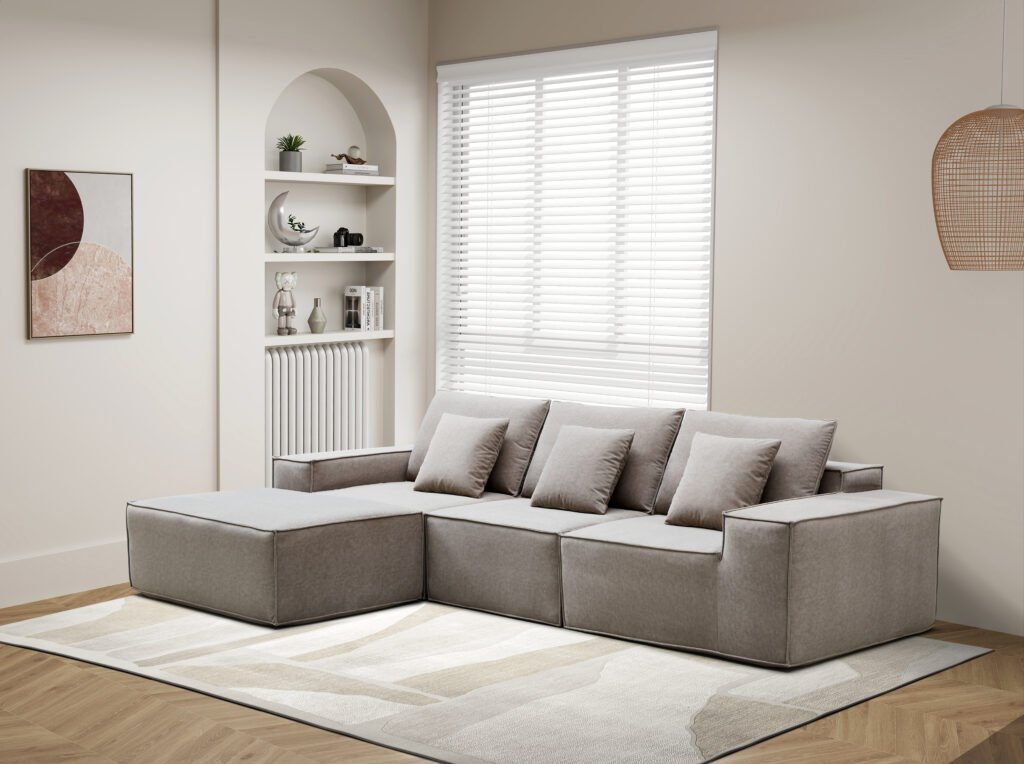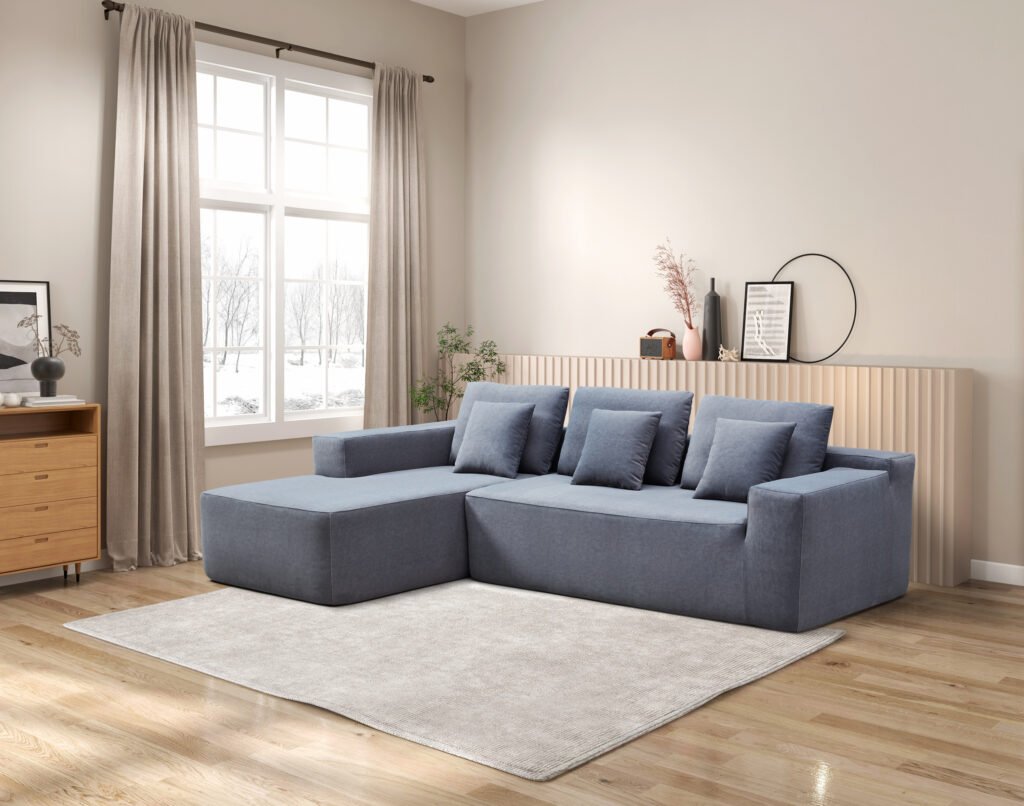Compressed sofa packaging has revolutionized the furniture industry by enabling easier transportation, reduced shipping costs, and efficient storage. A notable characteristic of these compressed sofa packs is their predominantly rectangular or cylindrical shapes. This article explores the reasons behind these common shapes, analyzing the functional, logistical, and manufacturing factors that influence packaging design. Drawing parallels from packaging principles such as those used in glass bottle finishes, we will delve into how shape impacts sealing, protection, and consumer experience. A detailed comparison table will also be provided to summarize the advantages and disadvantages of rectangular and cylindrical compressed sofa packs.
Introduction to Compressed Sofa Packaging Shapes
Compressed sofa packaging involves reducing the volume of sofa components—such as cushions, frames, and upholstery—by compressing and wrapping them tightly. This compact packaging facilitates easier handling and shipping. The two most common shapes for these compressed packs are:
- Rectangular packs: Typically box-like, flat, and stackable.
- Cylindrical packs: Tube-like, rolled, and often vacuum-sealed.
Understanding why these shapes dominate requires examining factors like space efficiency, protection, ease of handling, and material compatibility.


Why Rectangular and Cylindrical Shapes Are Preferred
1. Space Efficiency and Logistics
- Rectangular Packs: Rectangular shapes maximize space utilization in shipping containers, trucks, and warehouses. Their flat surfaces allow for stable stacking and minimize wasted space between packages, which is crucial for cost-effective logistics.
- Cylindrical Packs: Cylindrical shapes, while less space-efficient than rectangular, are easier to roll and handle manually. They also conform well to the shape of rolled sofa cushions or fabric components, allowing for effective compression without damaging the product.
2. Protection and Structural Integrity
- Rectangular Packs: Provide rigid protection when combined with sturdy outer materials like cardboard or plastic. The flat surfaces distribute pressure evenly, reducing the risk of deformation during transit.
- Cylindrical Packs: The curved surface of cylindrical packs offers natural resistance to external pressure, similar to how glass bottles’ round finishes provide structural strength. This shape can absorb impacts better in certain directions, protecting delicate upholstery.
3. Manufacturing and Packaging Process
- Rectangular Packs: Easier to automate in packaging lines, as machinery can fold and seal flat materials into boxes with precision. This is akin to how bottle finishes are standardized for compatibility with closures.
- Cylindrical Packs: Often used when vacuum sealing rolled fabric or cushions, as the shape naturally fits the compressed form. The cylindrical form also allows for continuous sealing along the length, ensuring airtight protection.


4. Consumer Handling and Unpacking Experience
- Rectangular Packs: Familiar and intuitive for consumers to handle, store, and open. They often come with easy-to-open seals or zippers, enhancing user experience.
- Cylindrical Packs: Compact and portable, suitable for consumers who prefer to carry or maneuver the package easily. The shape also facilitates unrolling the sofa components smoothly.
Comparison Table: Rectangular vs. Cylindrical Compressed Sofa Packs
| Feature | Rectangular Packs | Cylindrical Packs |
|---|---|---|
| Space Efficiency | High (stackable, minimal wasted space) | Moderate (less efficient stacking) |
| Protection Level | High (rigid, even pressure distribution) | Moderate to High (curved surface absorbs impact) |
| Manufacturing Ease | High (automated, standardized processes) | Moderate (vacuum sealing, rolling) |
| Material Compatibility | Works well with cardboard, plastic films | Works well with vacuum films, stretch wraps |
| Consumer Handling | Easy to carry, store, and open | Easy to carry and unroll |
| Cost | Moderate (standard materials and processes) | Moderate to High (vacuum sealing equipment) |
| Environmental Impact | Depends on materials used | Depends on materials used |
Insights from Glass Bottle Finish Design Principles
Drawing from the principles of glass bottle finishes, as detailed by Roetell, the shape of a package and its "finish" (closure or seal) are critical to functionality and consumer satisfaction. Just as bottle finishes are designed to create secure seals, maintain product integrity, and enhance usability, compressed sofa packaging shapes are designed to optimize sealing, protection, and handling.
- Sealing Efficiency: Rectangular packs allow precise heat sealing or adhesive closure along flat edges, similar to screw top finishes on bottles that ensure airtight sealing.
- Structural Strength: Cylindrical shapes, like certain bottle finishes, offer natural resistance to pressure and deformation.
- User Experience: Both packaging types consider ease of opening, reusability, and protection, paralleling how bottle finishes are tailored to consumer needs.
These parallels highlight how packaging design across industries balances shape, sealing technology, and user convenience to maximize product value1.


Factors Influencing the Choice of Shape in Compressed Sofa Packaging
- Product Dimensions and Material: Sofas with modular cushions may compress better into rectangular packs, while those with rolled fabric or foam may suit cylindrical packaging.
- Shipping and Storage Requirements: Rectangular packs optimize container space, reducing shipping costs; cylindrical packs may be preferred for smaller shipments or retail display.
- Packaging Machinery and Cost: Automated box folding favors rectangular shapes; vacuum sealing favors cylindrical forms.
- Branding and Marketing: Rectangular packs offer flat surfaces for branding and labels; cylindrical packs provide unique shelf presence.
- Environmental Considerations: Both shapes can be designed with recyclable or biodegradable materials to reduce environmental impact.
Conclusion
Rectangular and cylindrical shapes dominate compressed sofa packaging because they effectively balance space utilization, product protection, manufacturing efficiency, and consumer convenience. Rectangular packs excel in stacking and logistics, while cylindrical packs offer natural compression compatibility and impact resistance. Drawing inspiration from packaging principles such as those used in glass bottle finishes, these shapes optimize sealing and user experience.
Choosing the right shape depends on product specifics, shipping needs, cost constraints, and brand strategy. For tailored compressed sofa packaging solutions and expert guidance on optimal packaging shapes and closures, visit https://modular-sofas.com/.
This comprehensive analysis provides a detailed understanding of why compressed sofa packs are mostly rectangular or cylindrical, supported by a comparison table and insights from related packaging fields.